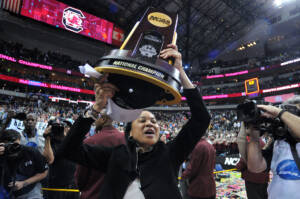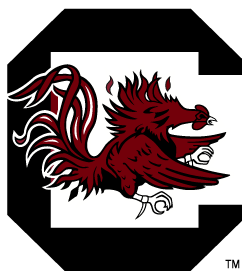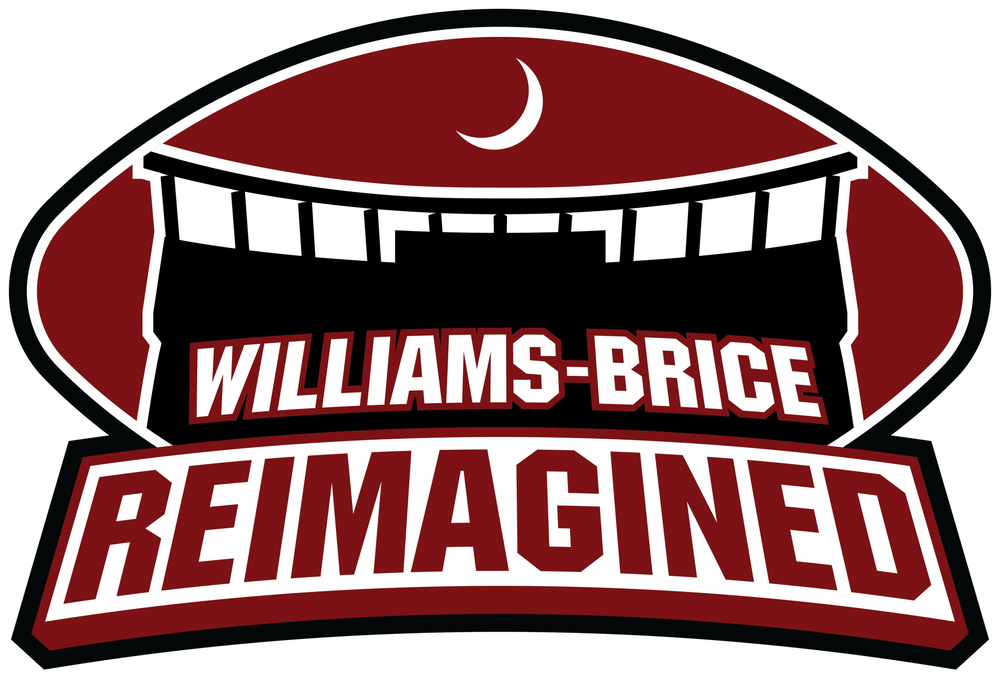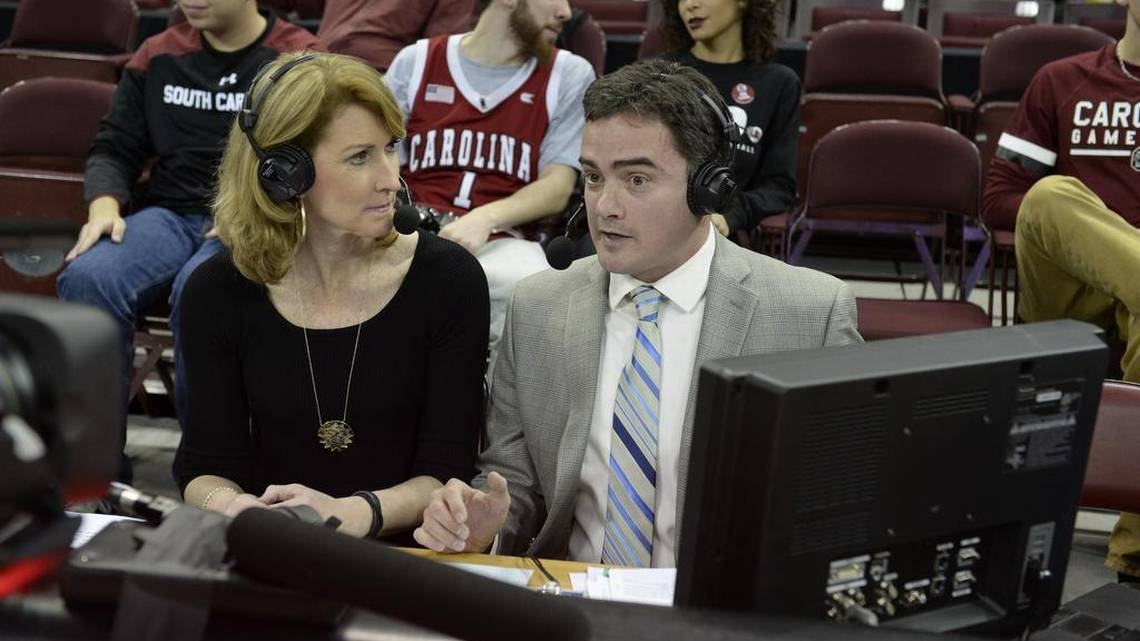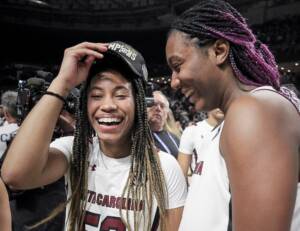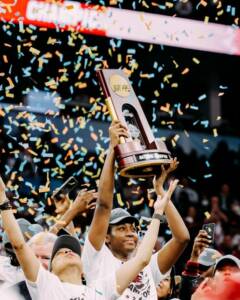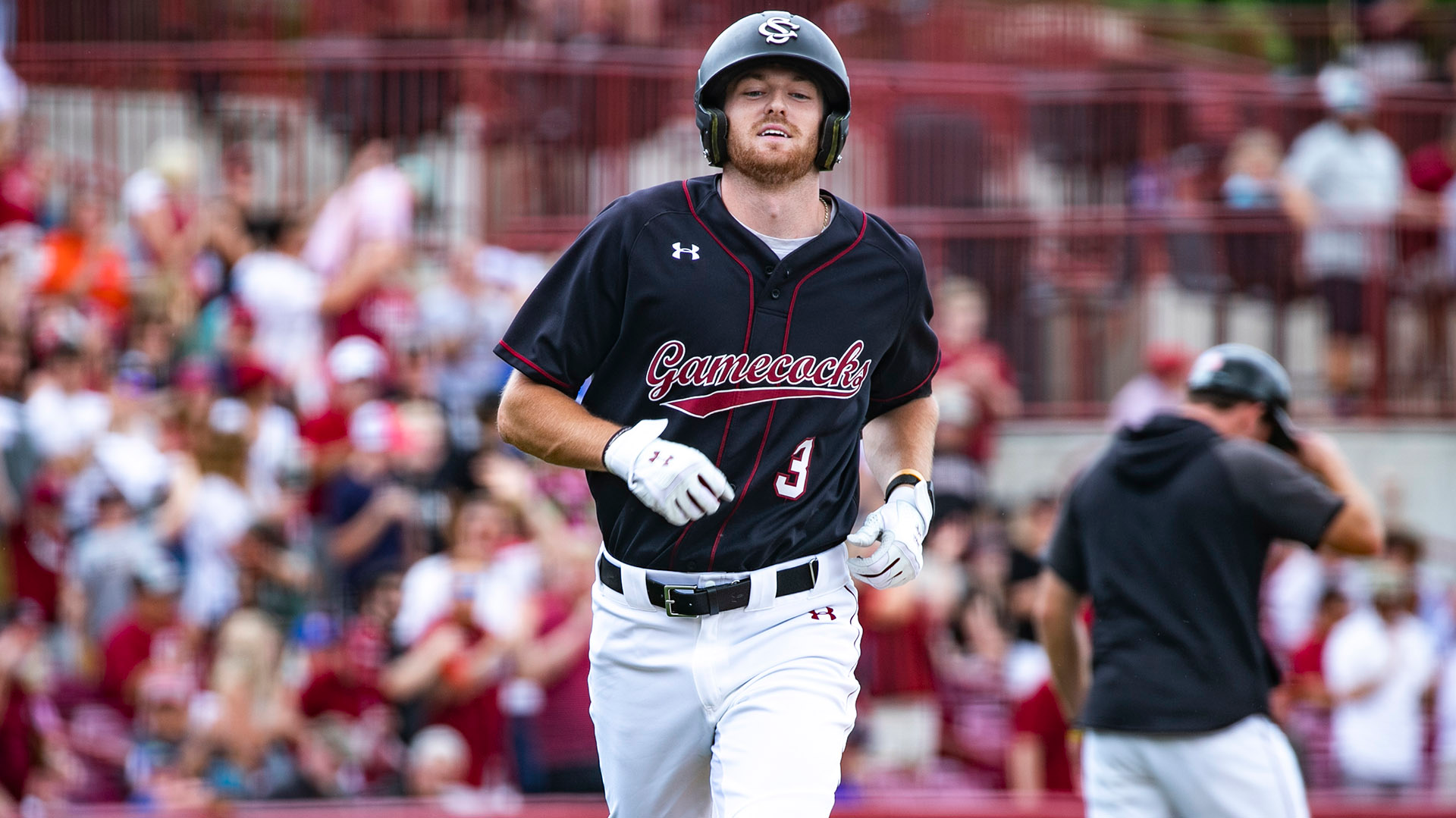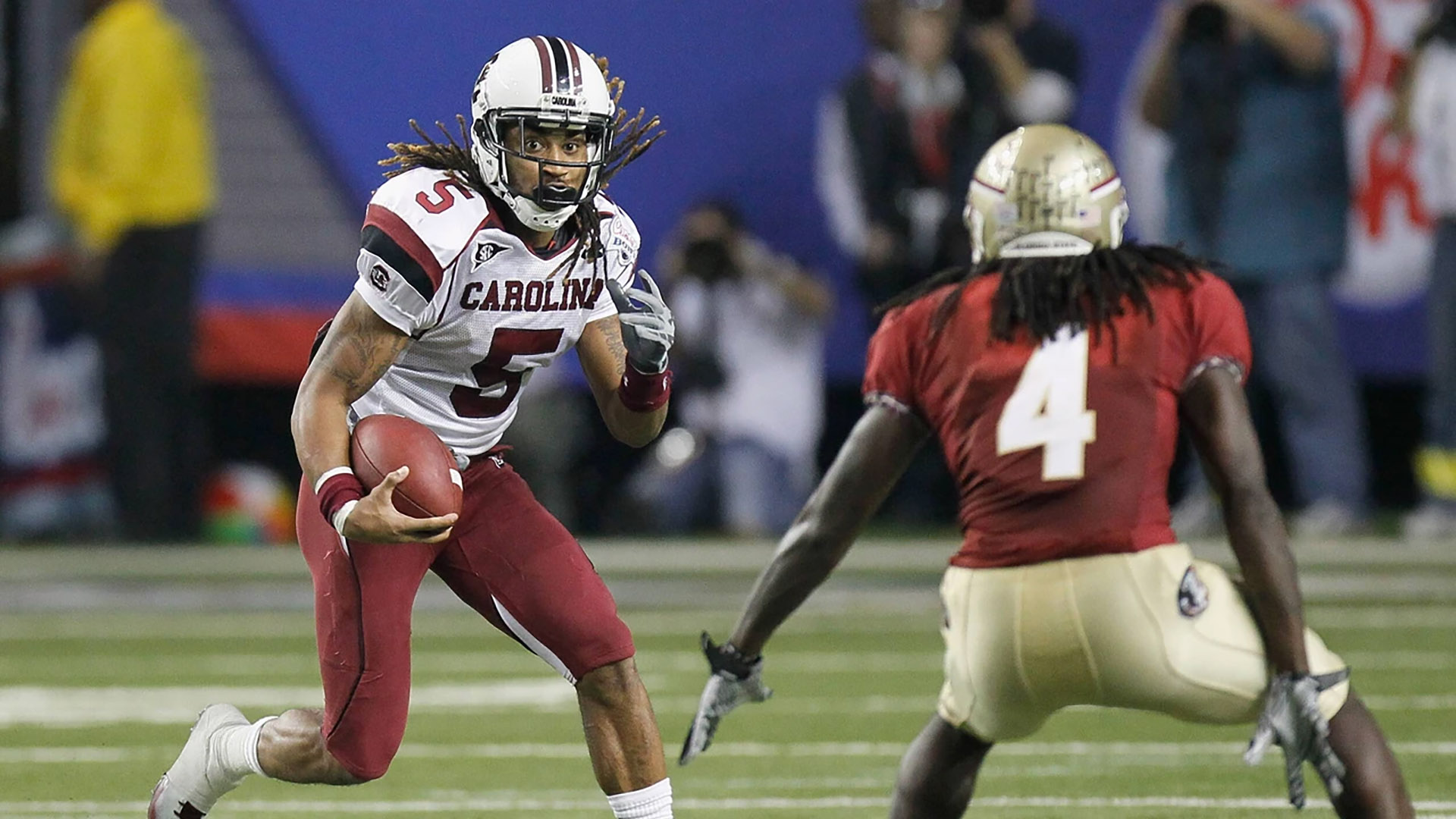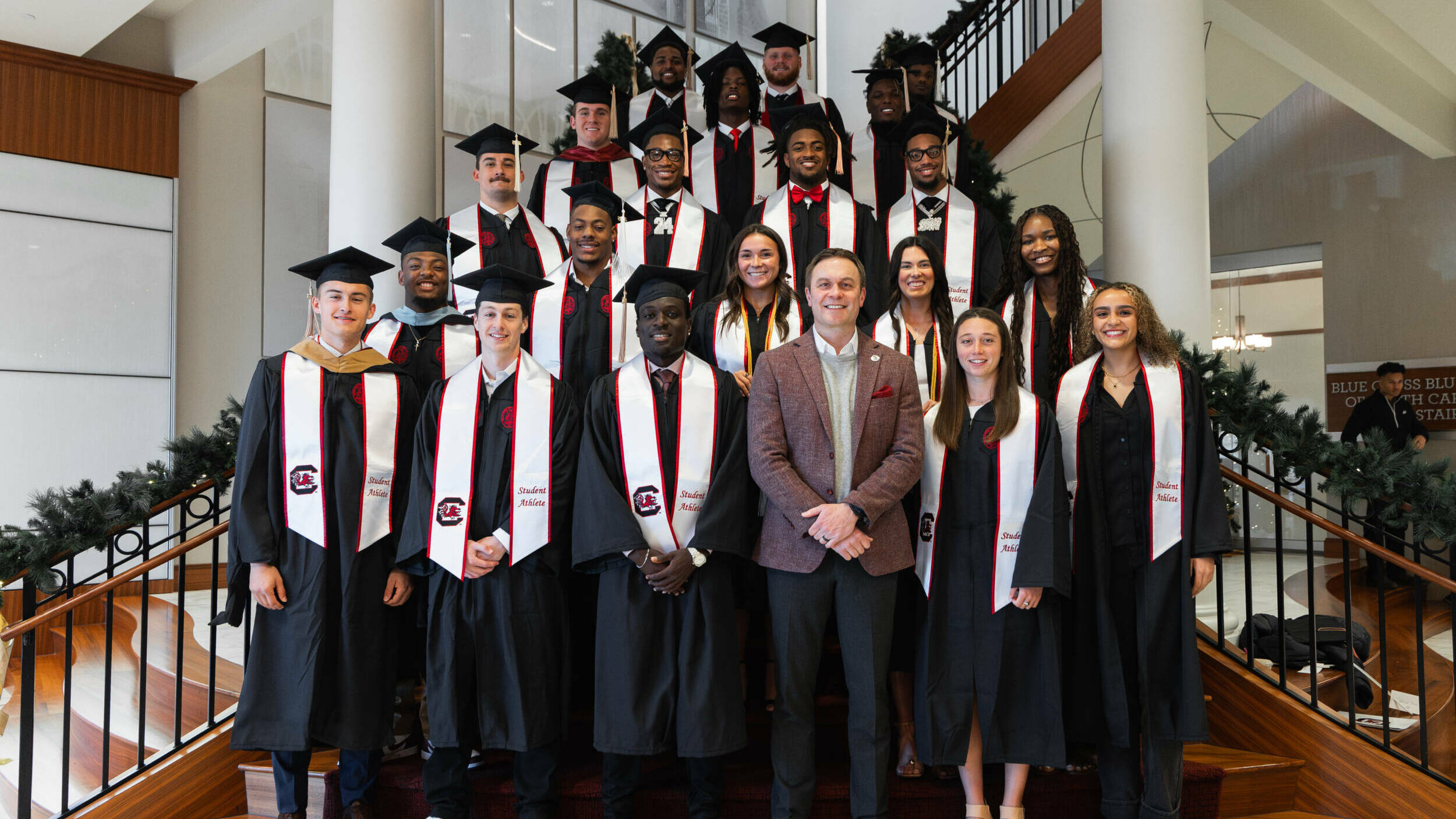Key players: (F) A’ja Wilson (17.9 ppg/7.9 rpg), (C) Alaina Coates (12.9 ppg/10.7 rpg), (G) Allisha Gray (13.2 ppg/5.0 rpg), (G) Kaela Davis (12.7 ppg/1.8 rpg), Tyasha Harris (5.6 ppg/3.2 apg), Bianca Cuevas Moore (8.3 ppg/1.6 spg).
This roster reads like an all-star team. Consider that six members of this team have played in the WNBA, including all five starters. The Gamecocks had a pair of All-Americans in the paint with future National Player of the Year A’ja Wilson and Alaina Coates. The duo combined for 129 blocked shots making the paint a no-fly zone for opponents. It’s hard to remember a tandem running the high-low offense any better. One could post up high while the other sat on the low block. If you double-teamed the low post, both were good enough to hit a 15-footer or drive to the basket for a layup. I loved watching Alaina Coates when she was fired up. If she flung the ponytail, I knew the person guarding her didn’t have a chance. If you doubled up high, it was still an easy pass down low where both were good enough to beat anyone one-on-one for an easy two-footer. Coming off the bench was a future star in Mikiah Herbert Harrigan (4.9 ppg/3.3 ppg, 39 blocked shots).
At guards, you had Allisha Gray and Kaela Davis. It pains me that South Carolina only had them for one year since they transferred from other schools and went pro with a year of eligibility remaining. Both had to sit out a year prior to playing for the Garnet and Black. Too bad the transfer portal wasn’t in its current form back then! Anyway, Gray could do everything. She could score from anywhere and defend like a beast! Davis had tremendous size and athleticism that just made her a mismatch for everyone.
The Gamecocks had a pair of quality point guards as Bianca Cuevas-Moore started the year, and later gave way to freshman stalwart Tyasha Harris. I loved Bianca’s savvy play, and I definitely respected how she handled things when Ty took over as the starter.
WHY THEY MIGHT BE THE BEST: I have to admit, when I first saw the non-conference slate prior to the start of the season, I thought it was a bit ambitious. What did I know? The Gamecocks went 12-1 against ranked teams, including a season-opening 12-point win at #7 Ohio State, a 14-point drubbing of #4 Louisville at a neutral site, followed by a nine-point win at #14 Texas in the first two-plus weeks of the season! The Gamecocks also had a top-10 win over #9 UCLA. In SEC play, the Gamecocks beat nationally ranked Kentucky twice and held off #4 Mississippi State by three at Colonial Life Arena. All five starters were legitimate scoring threats.
In the postseason, the Gamecocks knocked out nationally ranked Kentucky again in the SEC Tournament semis before thwarting #6 Mississippi State again in the title game. South Carolina would roll through the NCAA Tournament, which included wins over #10 Florida State, #6 Stanford, and #7 Mississippi State again in the National Championship game.
What made this team special to me is that the Gamecocks won the National Championship despite losing one of their best players just prior to the start of the postseason. All-American center Alaina Coates went down with an ankle injury at the end of the regular season, and Bianca Cuevas-Moore was inserted into what was now a four-guard starting lineup. The Gamecocks were able to play faster, and nobody could catch up! Overall, this team shot 48 percent from the floor, hit 72 percent of its free throws, while out-scoring opponents by 19.5 points per game and finishing +6.3 rebounds per game.
I’ll never forget the joy I felt, and that I witnessed from all involved in seeing the program win its first National Championship. So, if you tell me this was the best of the three South Carolina teams, I won’t tell you you’re wrong.
